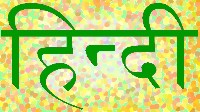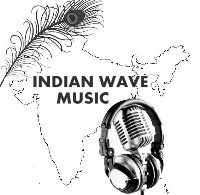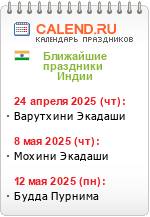Translation - Under Construction
The Department of Culture in the Ministry of Human Resource Development plays a vital role in the preservation, promotion and dissemination of art and culture. The aim of the Department is to develop ways and means by which the basic cultural and aesthetic values and perceptions remain active and dynamic among the people.
It also undertakes programmes of preservation, encouragement and dissemination of various manifestations of contemporary creativity. The Department is a nodal agency for commemorating significant events and celebrating centenaries of great persons.
VISUAL ARTS
LALIT KALA AKADEMI
To promote and propagate understanding of Indian art, both within and outside the country, the Government established Lalit Kala Akademi (National Akademi of Fine Arts) at New Delhi in 1954. To decentralise its activities, the Akademi has set up regional centres called Rashtriya Lalit Kala Kendra at Lucknow, Calcutta, Chennai and Bhubaneswar as well as a small office at Mumbai. The Akademi has also set up Community Artists Studio Complex with workshop facilities in painting, sculpture, print-making and ceramics at Garhi village in New Delhi. The regional centres and workshops are headed by experts to give technical guidance in these disciplines.
Since its inception, the Akademi organises national exhibitions of contemporary Indian art with 10 national awards, each of Rs 25,000. Three to four special exhibitions every year are organised with some concept involving known and eminent artists of India. Every three years, the Academy also organises Triennale India, one of the most significant exhibitions of contemporary art in this part of the world. The Akademi honours eminent artists and art historians every year by electing them as Fellows of the Akademi. To propagate Indian art outside, the Akademi regularly participates in International Biennales and Triennales abroad and also organises exhibitions of works of art from other countries. To foster contacts with artists from outside, it sponsors exchange of artists with other countries under the various Cultural Exchange Programmes and Agreements of the Government of India.
The Lalit Kala Akademi accords recognition to art institutions/associations and extends financial assistance to these bodies as well as state Akademis every year. It also gives scholarships to deserving young artists of its regional centres. Under its publication programme, the Akademi brings out monographs on the works of Indian contemporary artists in Hindi and English and books on contemporary, traditional, folk and tribal arts authored by eminent writers and art critics. The Akademi also brings out bi-annual art journals, Lalit Kala Contemporary (English), Lalit Kala Ancient (English) and Samkaleen Kala (Hindi). Apart from these, it brings out large size multi-colour reproductions of contemporary paintings and graphics from time to time. The Akademi has started a regular programme on research and documentation. Scholars are given financial assistance to undertake projects in contemporary folk, field projects on various aspects of Indian society and culture for better understanding, salvage and revitalisation of the rich cultural heritage of the country.
PERFORMING ARTS
MUSIC
Two main schools of classical music Hindustani and Carnatic continue to survive through oral tradition being passed on by teachers to disciples. This has led to the existence of family traditions called gharanas and sampradayas.
DANCE
Dance in India has an unbroken tradition of over 2,000 years. Its themes are derived from mythology, legends and classical literature, two main divisions being classical and folk. Classical dance forms are based on ancient dance discipline and have rigid rules of presentation. Important among them are Bharata Natyam, Kathakali, Kathak, Manipuri, Kuchipudi and Odissi. Bharata Natyam though it derives its roots from Tamil Nadu, has developed into an all India form. Kathakali is a dance form of Kerala. Kathak is a classical dance form revitalised as a result of Mughal influence on Indian culture. Manipur has contributed to a delicate, lyrical style of dance called Manipuri, while Kuchipudi is a dance form owing its origin to Andhra Pradesh. Odissi from Orissa, once practised as a temple dance, is today widely exhibited by artistes across the country. Folk and tribal dances are of numerous patterns.
Both classical and folk dances owe their present popularity to institutions like Sangeet Natak Akademi and other training institutes and cultural organisations. The Akademi gives financial assistance to cultural institutions and awards fellowships to scholars, performers and teachers to promote advanced study and training in different forms of dance and music, especially those which are rare.
THEATRE
Theatre in India is as old as her music and dance. Classical theatre survives only in some places. Folk theatre can be seen in its regional variants practically in every region. There are also professional theatres, mainly city-oriented. Besides, India has a rich tradition of puppet theatre, prevalent forms being puppets, rod puppets, glove puppets and leather puppets (shadow theatre). There are several semi-professional and amateur theatre groups involved in staging plays in Indian languages and in English.
SANGEET NATAK AKADEMI
Sangeet Natak Akademi, the National Akademy of Music, Dance and Drama, was founded in 1953 to promote the performing arts in collaboration with the states and voluntary organisations. By arranging free performances by talented artists, the Akademi seeks an enhanced public appreciation of music, dance and drama, together with exchange of ideas and techniques for the common gain of Indian performing arts. Kathak Kendra, Delhi, and Jawaharlal Nehru Manipur Dance Academy, Imphal, are training institutions run by the Akademi. While the Kathak Kendra imparts training in Kathak Dance and Music, the Jawaharlal Nehru Manipur Dance Academy imparts training in Manipuri dance and allied arts. The management of the two institutions vests in the Executive Board of the Akademi, which is assisted by the Advisory Committees of these constituent units.
In furtherance of its objectives, the Akademi is supporting training programmes in Chhau dance of Mayurbhanj and Seraikella as also Koodiyattam in Kerala. The Akademi also runs the following schemes: assistance to theatre directors and playwrights, promotion and preservation of traditional performing arts, support to art forms which are in danger of extinction, inter-state cultural exchange programmes, cultural exchange programmes with foreign countries, documentation and dissemination, etc. The Akademi also annually honours artistes in the field of performing arts and holds festivals, seminars, workshops, etc.
NATIONAL SCHOOL OF DRAMA
The National School of Drama (NSD) - one of the foremost theatre training institutions in the world and the only one of its kind in India was set up by Sangeet Natak Akademi in 1959. Later in 1975, it became an autonomous organisation, financed entirely by Department of Culture, Ministry of Human Resource Development, Government of India. NSD has produced a galaxy of talents —actors, directors, script-writers, designers, technicians and educationists who work not only in theatre but in film and television also —winning several awards, national and international. The training in the School is based on a thorough, comprehensive, carefully planned syllabus. The systematic study and practical performing experience of Sanskrit drama, modern Indian drama, traditional Indian theatre forms, Asian drama and western drama give the students a solid grounding and a wide perspective in the art of the theatre. In order to establish links between traditional theatre forms of India and modern expressions, the School brings in experts to train the students in these forms and also sends students to regional centres for training in traditional theatre. The School has also attracted to its training faculty some of the finest creative talents from within the country and abroad. The school has its performing wing, a Repertory Company, and Theatre-in- Education Company called Sanskaar Rang Toli that perform for Children and does workshops for children and teachers. Jashn-e-Bachan, a festival of plays for children was organized by NSD. Another important annual event started by NSD is Bharat Rang Mahotsava - a major festival of significant theatre productions, the first of its kind in India. NSD has its Regional Resource-cum-Research Centre at Bangalore.
LITERARY ART
Rediscovery of ancient and medieval Indian literature and development of modern literature in major Indian languages and English mark the literary activities of present-day India. A large number of literary periodicals and magazines, literary institutions and All India Radio have given impetus to the growth of modern Indian literature.
SAHITYA AKADEMI
Sahitya Akademi is the Indian National Academy of Letters meant to promote the cause of Indian literature through publications, translations, seminars, workshops, cultural exchange programmes and literary meets organised all over the country. The Akademi was founded in March 1954 as an autonomous body fully funded by the Department of Culture, Government of India. It was registered as a Society in 1956. Sahitya Akademi has a written constitution to guide and shape the modalities of its various functions. The Akademi has recognised 22 languages. It has an Advisory Board of ten members in each of these languages that suggests various functions and publications in the concerned languages. There are four Regional Boards to promote regional interaction among the languages of the north, west, east and south. Besides with its Head Office in New Delhi it has four offices in Calcutta, Mumbai, Bangalore and Chennai. It has a Library stocking about two lakh books in different languages. Sahitya Akademi recognises eminent writers through 22 Awards for creative writing, 22 translation prizes, fellowships for distinguished contribution to literature, Bhasha Samman meant to promote peripheral languages, Ananda Coomaraswamy Fellowship for South Asian scholars and Honorary Fellowships for foreign scholars who have done significant work in Indian literature. The Akademi publishes books in 22 languages including translations of Award-winning works, monographs on the great pioneers of Indian literatures, histories of literature, Indian and foreign classics in translation, anthologies of fiction, poetry and prose, biographies, Registers of Translators, Who’s Who of Indian Writers and Encyclopaedia of Indian Literature. So far the Akademi has published around 3,000 books in these different categories. The Akademi has three journals, Indian Literature (bi-monthly in English), Samakaleena Bharatiya Sahitya (bi- monthly in Hindi) and Samskrita Pratibha (half-yearly in Sanskrit). Sahitya Akademi holds about 30 regional, national and international seminars every year on various topics in literature, literary history and aesthetics. Besides, it organises a series of programmes, such as Meet the Author, Kavisandhi, Kathasandhi, Asmita, Mulakat, Men and Books, Through My Window, Loka, The Many Voices Avishkar, Antaral, and Literary Forum. The Akademi also regularly holds Translation Workshops. The Akademi holds annually a week-long Festival of Letters usually in February. It has certain special projects like the Ancient Indian Literature, Medieval Indian Literature and Modern Indian Literature together constituting ten volumes of the best of Indian writing over five millennia. Another project for the translation and publication of Tribal Literature has been established at Vadodara as its headquarters. The Akademi has also launched a collaborative project with the Natioinal Book Trust, India to bring out 100 Indian classics in translation. Another project is the Archives of Indian Literature that is meant to document literature through films, videos, audios, CDs and to preserve manuscripts, photographs and other materials associated with eminent Indian writers. The Akademi gives Travel Grants to young authors to interact with writers in other parts of India. It also has a cultural exchange programme where Indian writers and scholars are sent abroad and foreign writers and scholars received in India.
CHRONOLOGICAL HIGHLIGHTS
1814 The Indian Museum, Calcutta founded.
1861 The Archaeological Survey of India established.
1891 Khuda Baksh Oriental Public Library established in Patna.
1931 The Allahabad Museum established.
1945 The Anthropological Survey of India established.
1951 The Salar Jung Museum Hyderabad established.
1954 The National Gallery of Modern Art established.
— The Sahitya Akademi founded (March)
— The Lalit Kala Akademi (National Akademi of Fine Arts) established at New Delhi.
— Jawaharlal Nehru Manipur Dance Academy established.
1960 The National Museum set up.
1967 The Central Institute of Higher Tibetan Studies established.
1972 The Raja Rammohan Roy Library Foundation set up in Calcutta.
1978 The National Council of Science Museums set up in Calcutta (April).
1984 Gandhi Smriti and Darshan Samiti formed (September).
1987 The Indira Gandhi National Centre for the Arts formed (19 March).
1989 The National Museum Institute of History of Arts, Conservation and Museology started functioning.
For further information please visit : http://education.vsnl.com/iccr










